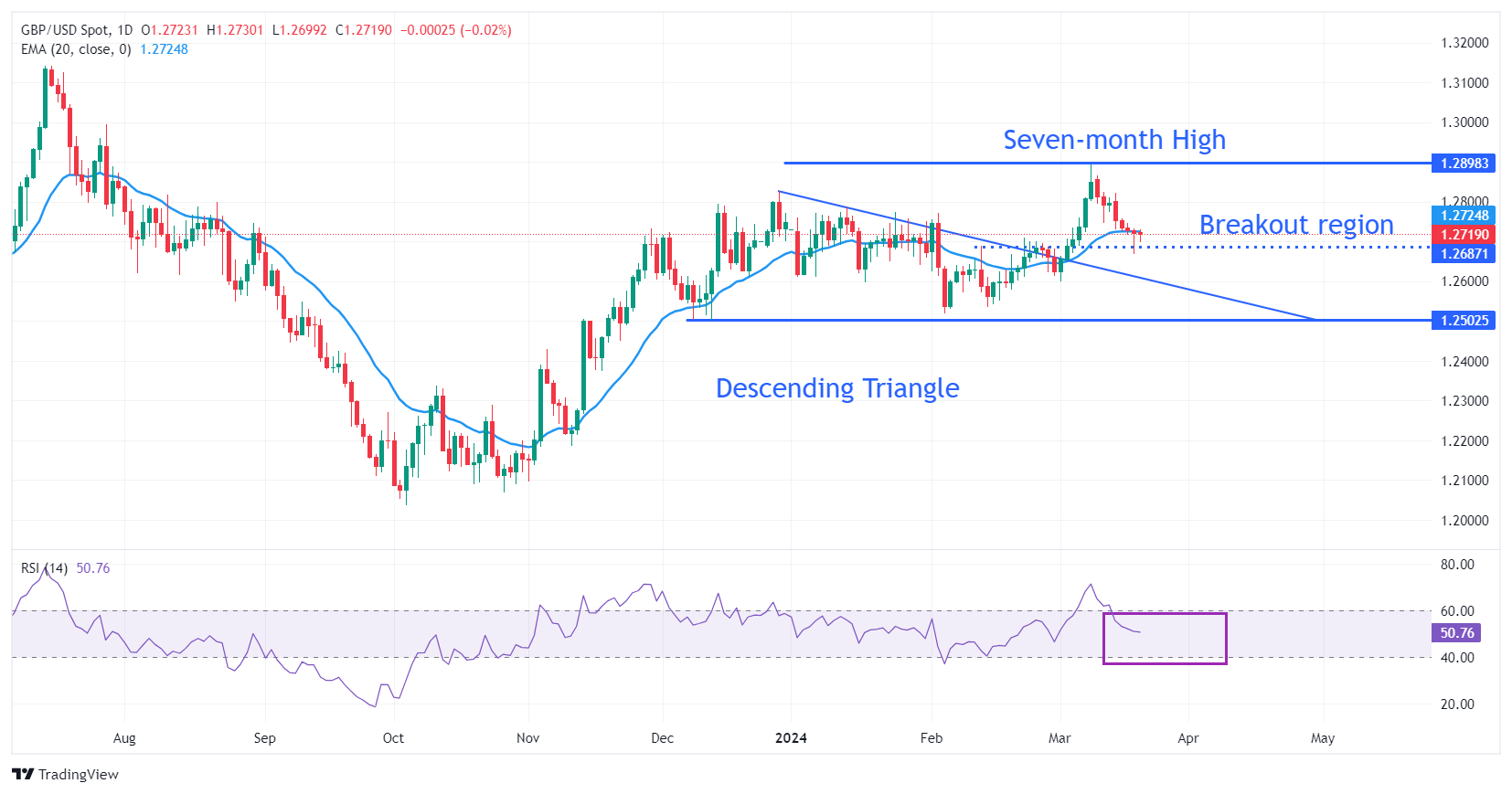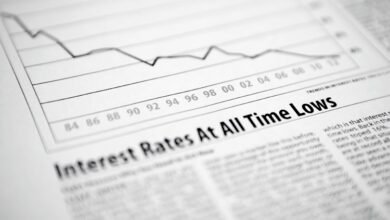Pound Sterling falls on soft UK Inflation, Fed policy in focus

- The Pound Sterling is expected to remain under pressure on lower-than-anticipated UK CPI data for February.
- Soft UK inflation reinforces market expectations for the BoE to begin reducing interest rates in August.
- The next move in the US Dollar will be guided by the Fed’s monetary policy meeting.
The Pound Sterling (GBP) turns volatile in Wednesday’s London session as the United Kingdom Office for National Statistics (ONS) reported softer-than-expected Consumer Price Index (CPI) data for February. Annual headline and core inflation decelerated to 3.4% and 4.5%, respectively. Lower inflation is expected to allow Bank of England (BoE) policymakers to consider cutting interest rates early than what market participants had anticipated.
Investors should brace for high volatility for the Pound Sterling as the BoE is set to announce its second monetary policy decision of 2024 on Thursday. Investors are expecting the BoE to hold interest rates steady at 5.25%, but soft inflation data might allow policymakers to deliver a slight dovish guidance on interest rates.
Meanwhile, investors remain risk-averse ahead of the Federal Reserve’s (Fed) policy meeting, which will be announced at 18:00 GMT. Investors will keenly focus on the quarterly updated dot plot and economic projections as the Fed is expected to keep interest rates unchanged in the range of 5.25%-5.50%. The dot plot shows interest rate projections from Fed officials for various time frames.
Daily digest market movers: Pound Sterling eyes downside amid multiple headwinds
The Pound Sterling is expected to face pressure as the United Kingdom ONS has reported softer-than-expected consumer price inflation data for February. The annual headline inflation significantly decelerated to 3.4% from expectations of 3.6% and the prior reading of 4.0%. The monthly headline CPI grew by 0.6%, rebounding from a similar decline seen in January. Investors anticipated the monthly headline inflation to grow at a higher pace of 0.7%.
The annual core CPI, which strips off volatile food and energy prices, softened to 4.5% from estimates of 4.6% and the former reading of 5.1%. BoE policymakers generally consider the core inflation data as a preferred measure for decision-making on interest rates. Soft figures might increase their confidence that inflation will sustainably return to the desired rate of 2%. BoE policymakers have been reiterating that rate cuts would be appropriate only if they get the conviction that the inflation target will be achieved.
The Pound Sterling is expected to remain volatile as investors will shift focus to the Bank of England’s interest rate decision, which will be announced on Thursday. The BoE is expected to keep interest rates unchanged at 5.25% for the fifth time in a row. Investors will look for cues about when the BoE will start reducing interest rates. Currently, investors hope that the BoE will start reducing interest rates from the August meeting. The soft inflation data released on Wednesday is likely to reinforce these expectations.
Meanwhile, the market sentiment remains cautious ahead of the Federal Reserve’s monetary policy decision. The CME FedWatch tool shows that the central bank is set to keep interest rates unchanged in the range of 5.25%-5.50%. With the no-change in interest rates almost fully priced in, the monetary policy statement, Fed Chair Jerome Powell’s press conference, and the dot plot and economic projections will be in focus.
Technical Analysis: Pound Sterling struggles to hold above 20-EMA
The Pound Sterling finds interim support near the breakout region of the Descending Triangle formed around 1.2700. The near-term demand for the GBP/USD pair remains uncertain as it struggles to sustain above the 20-day Exponential Moving Average (EMA), which trades around 1.2730.
On the downside, the downward-sloping border of the Descending Triangle chart pattern will act as a support of the Pound Sterling. On the upside, a seven-month high at around 1.2900 will be a major barricade for the Cable.
The 14-period Relative Strength Index (RSI) returns to the 40.00-60.00 range, indicating a sharp volatility contraction.
Pound Sterling FAQs
The Pound Sterling (GBP) is the oldest currency in the world (886 AD) and the official currency of the United Kingdom. It is the fourth most traded unit for foreign exchange (FX) in the world, accounting for 12% of all transactions, averaging $630 billion a day, according to 2022 data. Its key trading pairs are GBP/USD, aka ‘Cable’, which accounts for 11% of FX, GBP/JPY, or the ‘Dragon’ as it is known by traders (3%), and EUR/GBP (2%). The Pound Sterling is issued by the Bank of England (BoE).
The single most important factor influencing the value of the Pound Sterling is monetary policy decided by the Bank of England. The BoE bases its decisions on whether it has achieved its primary goal of “price stability” – a steady inflation rate of around 2%. Its primary tool for achieving this is the adjustment of interest rates. When inflation is too high, the BoE will try to rein it in by raising interest rates, making it more expensive for people and businesses to access credit. This is generally positive for GBP, as higher interest rates make the UK a more attractive place for global investors to park their money. When inflation falls too low it is a sign economic growth is slowing. In this scenario, the BoE will consider lowering interest rates to cheapen credit so businesses will borrow more to invest in growth-generating projects.
Data releases gauge the health of the economy and can impact the value of the Pound Sterling. Indicators such as GDP, Manufacturing and Services PMIs, and employment can all influence the direction of the GBP. A strong economy is good for Sterling. Not only does it attract more foreign investment but it may encourage the BoE to put up interest rates, which will directly strengthen GBP. Otherwise, if economic data is weak, the Pound Sterling is likely to fall.
Another significant data release for the Pound Sterling is the Trade Balance. This indicator measures the difference between what a country earns from its exports and what it spends on imports over a given period. If a country produces highly sought-after exports, its currency will benefit purely from the extra demand created from foreign buyers seeking to purchase these goods. Therefore, a positive net Trade Balance strengthens a currency and vice versa for a negative balance.
Source link






